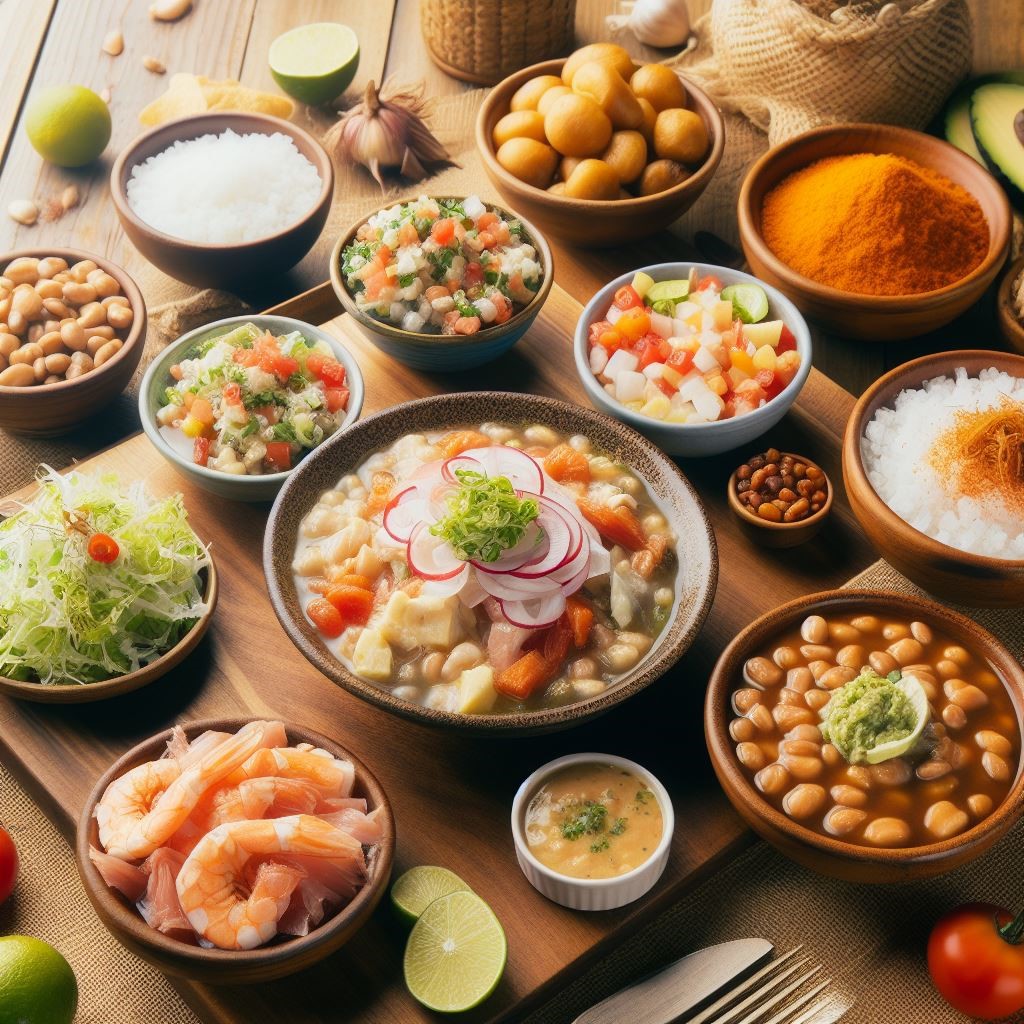Food fresh from the farm is more than a slogan in Costa Rica; it is a way of life. Costa Rica, renowned for its lush landscapes and biodiversity, provides a culinary experience as colorful and fresh as its surroundings. This blog post will take you on a culinary tour through Costa Rican cuisine, including traditional dishes, popular street snacks, scrumptious desserts, and cool beverages. So, whether you’re a foodie eager to try new dishes or a traveler planning a vacation to this stunning country, this guide is for you.
Why read this blog? Simply said, it provides authentic views and practical solutions for Costa Rican cuisine. Our postings are not only educational; they also promote reader participation. So, whether you’re a foodie, a resident, or a visitor, this site is your go-to resource for experiencing Costa Rica via all of your senses. Stay tuned as we embark on this delectable trip together!

The History of Costa Rican Cuisine
Costa Rican cuisine is a colorful fusion of cultures, flavors, and methods, influenced by the country’s rich history, bountiful terrain, and innovative spirit.
Costa Rica’s indigenous tribes, like the Chorotega and Bribri, were the first to influence the country’s culinary scene. Maize, beans, and squash formed the majority of their diet, and they frequently supplemented these with locally available fruits, roots, and meats. Costa Rica’s lush soils produced an abundant crop, laying the groundwork for a cuisine that values freshness and ingredient quality.
The entry of the Spanish in the sixteenth century resulted in substantial changes. They added new foods such as rice, meat, and various vegetables and fruits. They also brought their cooking techniques and spices, which enhanced the native cuisine.
Costa Rican food has evolved and innovated throughout the centuries. The introduction of coffee in the nineteenth century had a significant impact on both the economics and the gastronomic landscape. Coffee rose to prominence as a significant export crop and household staple in Costa Rica.
Afro-Caribbean culture gained traction in the twentieth century, particularly along Costa Rica’s Caribbean coast. The addition of coconut, spices, and dishes like as jerk chicken and patí enriched the country’s cuisine.
Costa Rican food is now a delicious fusion of these influences. It commemorates the country’s agricultural bounty, with a focus on fresh, locally sourced products. From the substantial Gallo Pinto to the delightful ceviche, each dish reflects the country’s diverse cultural background and culinary growth.
In summary, understanding the history of Costa Rican cuisine entails more than merely tracing its culinary origins. It is about acknowledging the convergence of civilizations and influences that have shaped it.
Traditional Costa Rican Food
Costa Rica’s culinary landscape is a delectable fusion of flavors, with each dish conveying a story about legacy, tradition, and a passion for fresh, local ingredients. Let’s look at some of the must-try traditional dishes:
Gallo Pinto: which translates to’spotted rooster’, is a popular breakfast dish in Costa Rica. It’s a filling combination of rice and black beans, frequently served with eggs, sour cream, and tortillas. The secret ingredient that gives Gallo Pinto its distinct flavor is Lizano sauce, a Costa Rican condiment that is a must-have in every Tico kitchen.
Ceviche: A popular dish throughout Latin America, Costa Rican ceviche has a distinct touch. Freshly caught fish or seafood is marinated in citrus juices, usually lime, and seasoned with finely chopped onions, cilantro, and peppers. It’s a refreshing dish that’s ideal for Costa Rica’s tropical environment.
Olla de Carne: As a third choice, let us discuss Olla de Carne, a typical Costa Rican beef stew. It’s a hearty meal made with beef, potatoes, carrots, plantains, yucca, and chayote. It’s slow-cooked to perfection, enabling all of the flavors to blend together.
These flavorful dishes, produced with fresh, locally sourced ingredients, highlight Costa Rica’s lively culinary scene. Whether you live in Costa Rica or are visiting, sampling these foods is a great way to learn about the country’s culture.
Popular Street Food
Street food reveals the soul of a country’s cuisine, and Costa Rica is no exception. From lively metropolitan markets to roadside shops in rural towns, you’ll find a wide range of excellent street delicacies as diverse as the country itself. Here are some must-eat street delicacies in Costa Rica:
Chorreadas are corn pancakes that can be either sweet or savory. The sweet variety is frequently served with natilla, a sort of Costa Rican sour cream, whereas the savory version is typically accompanied by cheese.
Costa Rican empanadas, a popular snack across Latin America, often have fillings of cheese, beans, or meat. People deep fry them until they turn golden brown and serve them hot.
Chicharrón, a dish made with fried pork rinds or pork bellies, often comes served with tortillas and a selection of salsas.
You can find Arroz con Pollo, a comfort dish that literally translates as ‘rice with chicken’, all around Costa Rica. It’s a tasty combination of rice, chicken, vegetables, and spices, frequently served with fries and salad on the side.
These street meals provide a glimpse of Costa Rica’s culinary variety. They demonstrate the country’s abundant agricultural resources and the inventiveness of its inhabitants. So, whether you’re touring the lively marketplaces of San José or the peaceful communities of the countryside, don’t miss out on these delectable treats!
Costa Rican Desserts
Transitioning from savory to sweet, Costa Rican cuisine includes a delectable selection of desserts to satisfy any sweet craving. Crafted with fresh, local ingredients, these desserts are the perfect finale for a meal or a delightful snack in between. Now, let’s delve into some must-have Costa Rican desserts:
Tres Leches Cake is a sponge cake made with three types of milk: evaporated milk, condensed milk, and heavy cream. It’s extremely juicy and delicious, and is sometimes served with whipped cream on top.
Arroz con Leche is a delicious rice pudding made with rice, milk, sugar, and cinnamon. It is a popular dish in several Latin American nations, with each having its own variation.
Flan, a creamy caramel custard delicacy, is popular throughout Latin America. Costa Rican versions frequently feature a wonderful caramel sauce on top.
Typically coated with sugar, Churros, are served with a side of chocolate sauce for dipping, churros are fried dough pastries. Both residents and visitors enjoy them as a popular street meal.
These sweets provide a glimpse of Costa Rica’s sweet culinary legacy. They demonstrate the country’s abundant agricultural resources and the inventiveness of its inhabitants. So, whether you’re touring the lively marketplaces of San José or the calm communities of the countryside, don’t pass up these delectable goodies!
Conclusion
Understanding a country’s culture requires familiarizing oneself with its unique cuisine, and Costa Rica is no different. Costa Rican cuisine provides a gourmet adventure as vivid and diverse as the nation itself, with traditional dishes and popular street snacks, as well as delectable desserts and refreshing beverages.
Whether you live in Costa Rica or are just visiting, tasting these dishes and drinks is a great way to learn about the country’s culture. And the best part?
So, the next time you’re in Costa Rica, don’t just visit the sites. Try them. Enjoy them. And let the flavors of Costa Rica take you on an unforgettable adventure.”



